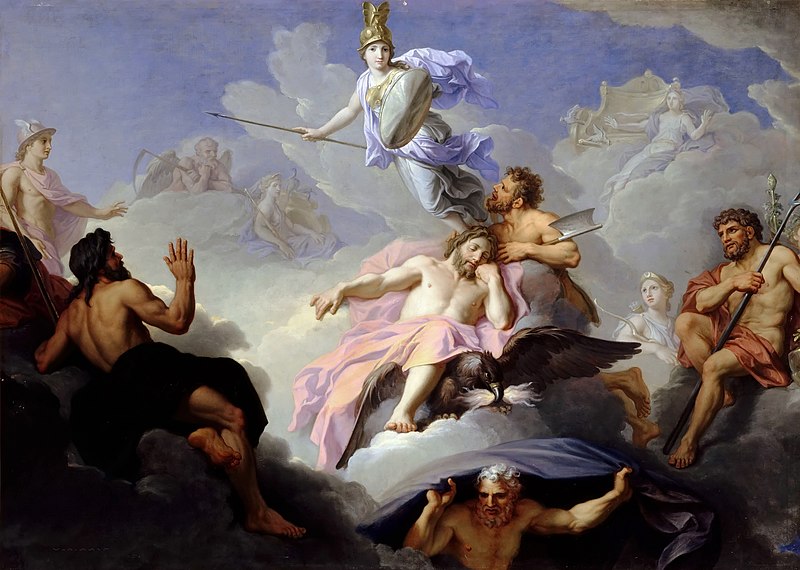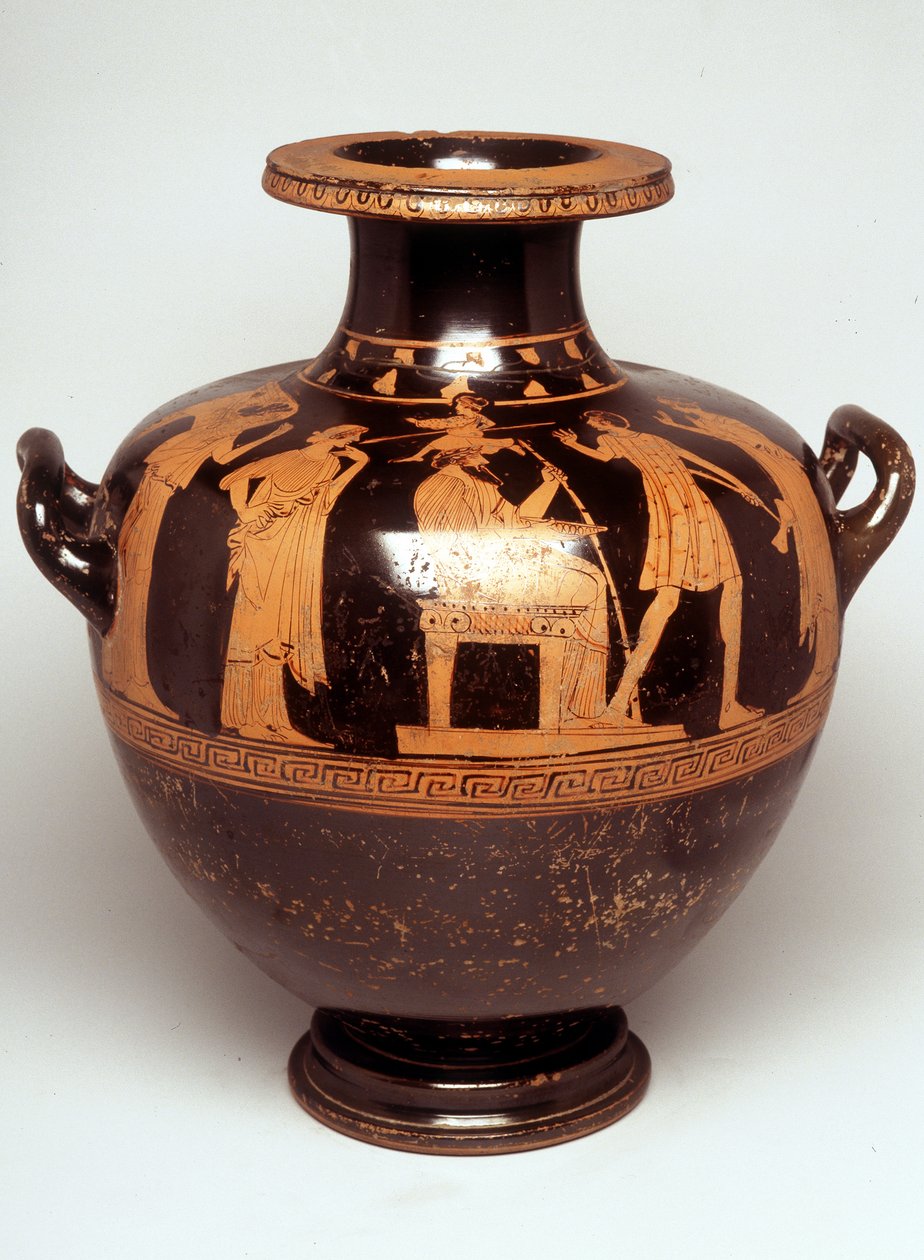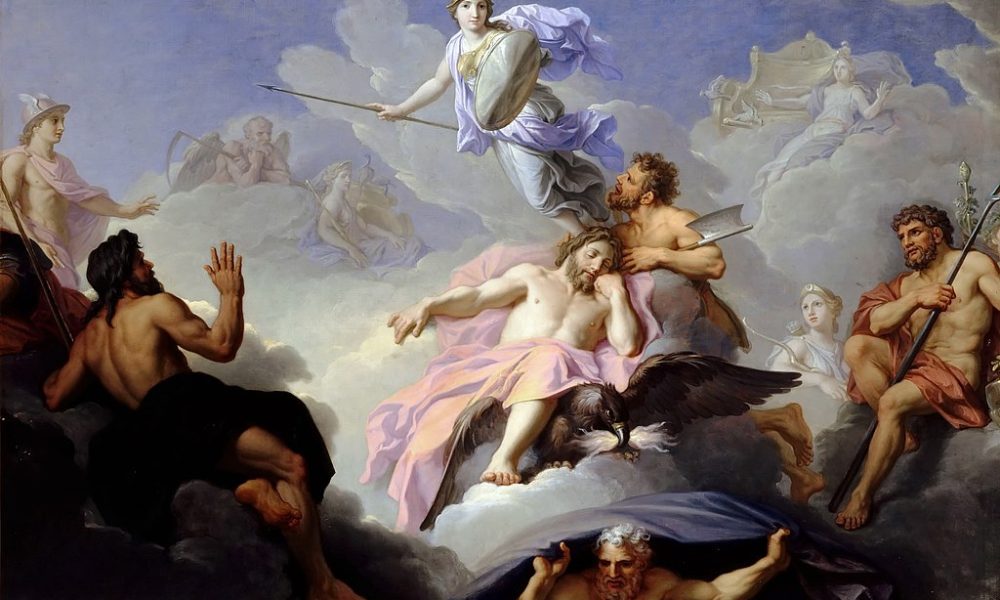How was Athena born? The story of how the goddess Athena was born is one of the most interesting and symbolic events in Greek mythology. It highlights the goddess’s attributes of wisdom, strategic warfare, and craftsmanship, showing her elevated position in the Greek pantheon and the dynamic of power and intellect in ancient Greek society.
The Myth of How Athena Was Born
Before Zeus and Hera, there was Zeus and Metis, the goddess of wisdom, cunning, and his counsel. One day, Zeus heard a prophecy that any children by Metis would have more power than him, so to prevent this, he swallowed her, unaware that she was already pregnant with Athena. Metis gave birth to Athena inside of Zeus and aided her exit into the world, giving Zeus a massive headache. One of Zeus’ children, Hephaestus, had to chop open Zeus’ head with an axe, and out came Athena, fully adult and fully armed. This unwanted child, feared for potentially usurping him, was to become Zeus’ favorite.
This reminds us of the inevitable dethroning of previous generations of gods; like the story where Cronus swallowed all his own children after hearing a prophecy that they would dethrone him. Despite his efforts, his children, led by Zeus, ultimately overthrew him.
Sources That Mention How Was Athena Born
Various literature mentions the myth of the goddess Athena’s birth, sometimes indirectly or as a reference, but here are two sources that explicitly describe the birth story:
- Hesiod’s Theogony, written in the 8th century BC
…But he seized her with his hands and put her in his belly, for fear that she might bring forth something stronger than his thunderbolt. Therefore, Zeus, who sits on high and dwells in the aether, swallowed her down suddenly. But she straightway conceived Pallas Athena, and the father of men and gods gave her birth by way of his head on the banks of the river Trito. She remained hidden beneath the inward parts of Zeus, even Metis, Athena’s mother, worker of righteousness, who was wiser than gods and mortal men. There, the goddess received that whereby she excelled in strength all the deathless ones who dwell in Olympus. She who made the host-scaring weapon of Athena. And with it, Zeus gave her birth, arrayed in arms of war…
- Appollodorus’s The Library, from 2nd century BC
When she was with child, Zeus, taking time by the forelock, swallowed her, because Earth said that, after giving birth to the maiden who was then in her womb, Metis would bear a son who should be the lord of heaven. From fear of that Zeus swallowed her. And when the time came for the birth to take place, Prometheus or, as others say, Hephaestus, smote the head of Zeus with an axe, and Athena, fully armed, leaped up from the top of his head at the river Triton.
Symbolism and Interpretations of the Birth of Athen
- Being born from a head: This represents Athena’s intellectual and strategic abilities and deep wisdom. Among the goddesses, she was known for her mind. She embodied every aspect of the mind, including creativity, and excelled in craftsmanship.
- Being born from Zeus’s head: Combined with being his favorite child, this shows the elevated and authoritative nature of her traits. It emphasizes her position as one of the most respected deities in the Greek pantheon. This birth from Zeus could also be seen as reinforcing the patriarchal structure in Greek society at the time.
- Being the daughter of Metis: Metis, the goddess of wisdom and craftiness, shows Athena’s true origins. Metis’s presence in the background subtly acknowledges the importance of female wisdom, even within a patriarchal framework.
- Birth without sexual union: This reflects Athena’s virginity, independence, and autonomy.
- Being born fully armoured: This reinforces her association with war, specifically strategic warfare. While Athena was a warrior, she prioritized peace and justice, advocating for wars to be won through strategy and wisdom rather than brute force.
- Being born fully adult: This represents her maturity and advanced state of being, embodying wisdom.
Myths from Around the World That Resemble the Birth of Athena
The birth from the head is unique to the story of Athena and Zeus. However, there are similar symbolic births that don’t result from the union of man and wife but from body parts, objects, or actions, each carrying its own symbolic meaning. For example:
- Aphrodite, the Greek goddess of love and beauty, emerged from the foam created by Cronus’ mutilated testicle.
- Dionysus, the Greek god of wine and intoxication, was born from Zeus’ thigh.
- Horus, the Egyptian sky god, was born from the dismembered body parts of Osiris.
Artistic Representations of the Birth of Athena
Surprisingly, Renaissance artists did not spend much time on this story. Most artistic representations of Athena’s birth from Zeus’s head were crafted long before, during the classical Greek period, and are commonly depicted on Greek vases.




Other Famous Myths Involving Athena
- The weaving contest with Arachne
- The contest with Poseidon to become patron of Athens
- Athena guiding Odysseus on his journey home from the Trojan war
- Athena turns Medusa into an ugly snaked-hair gorgon











